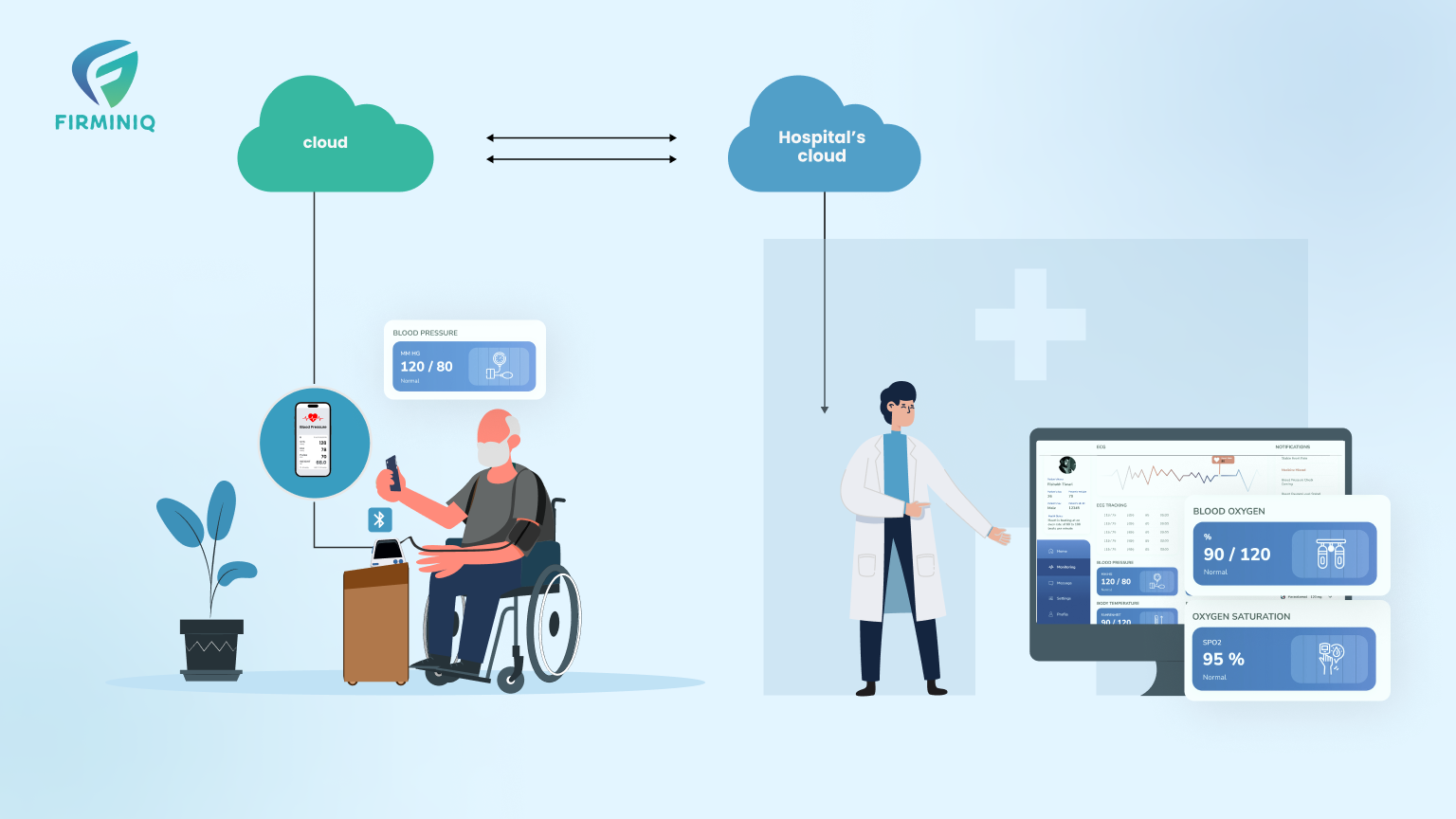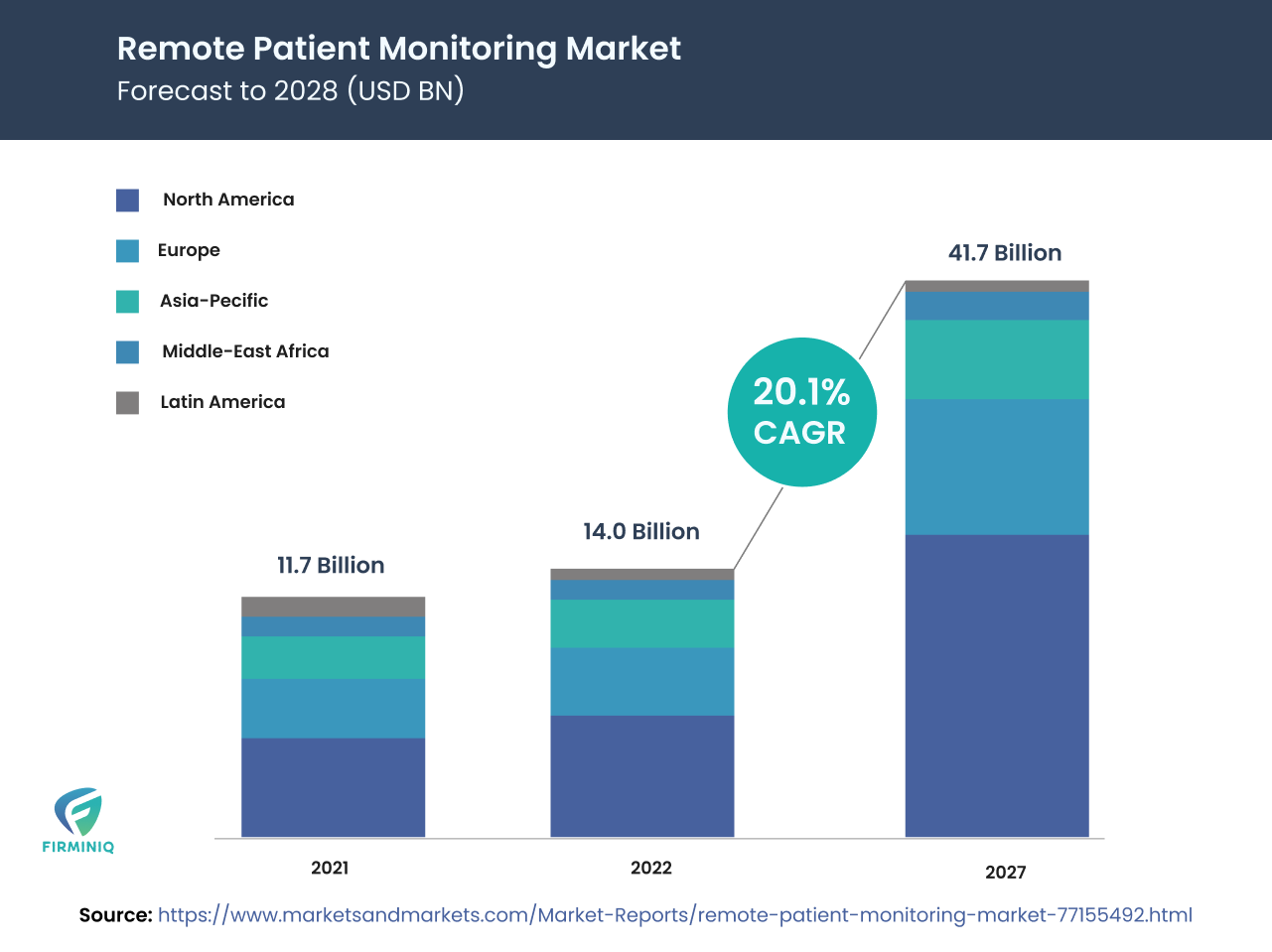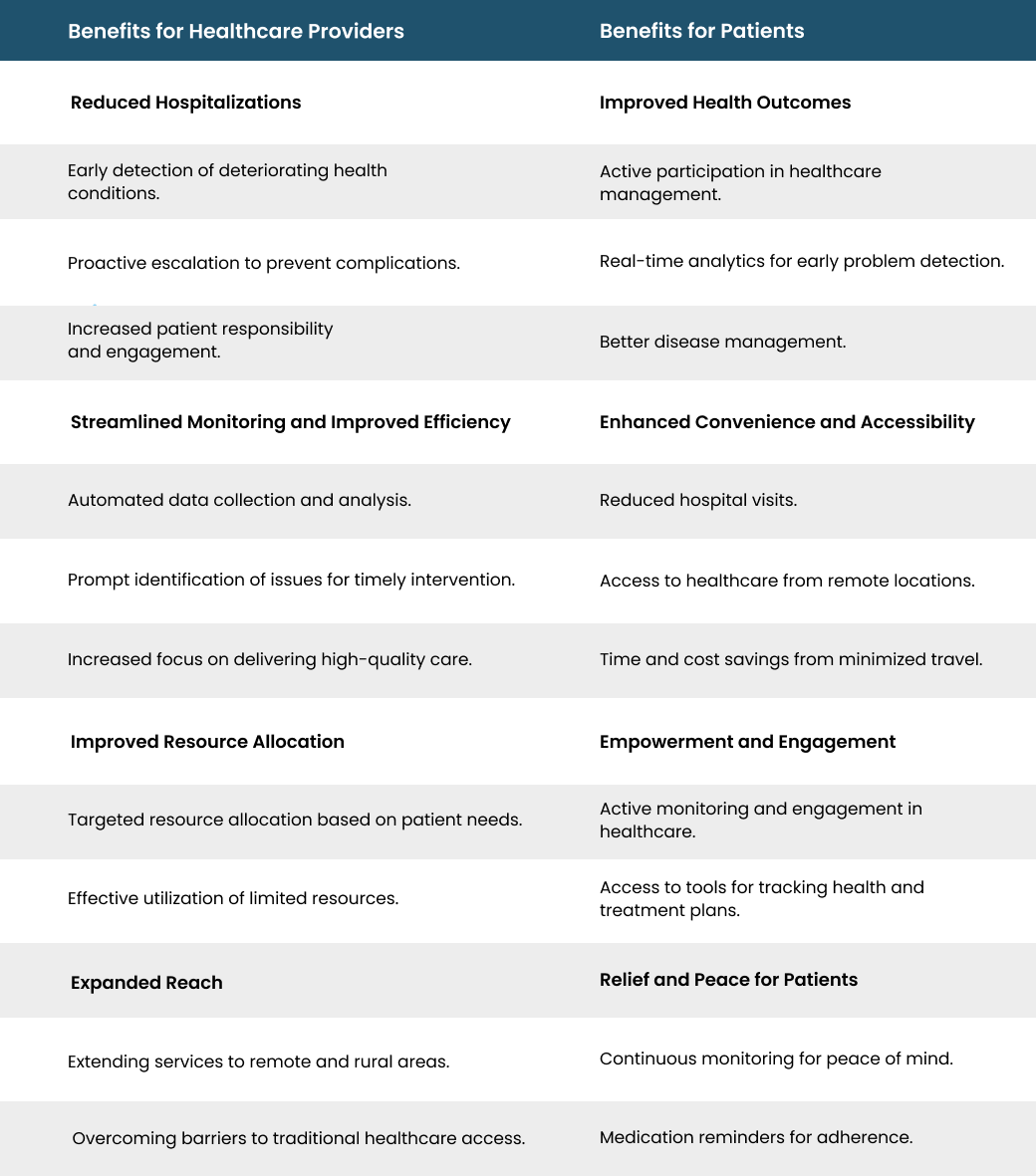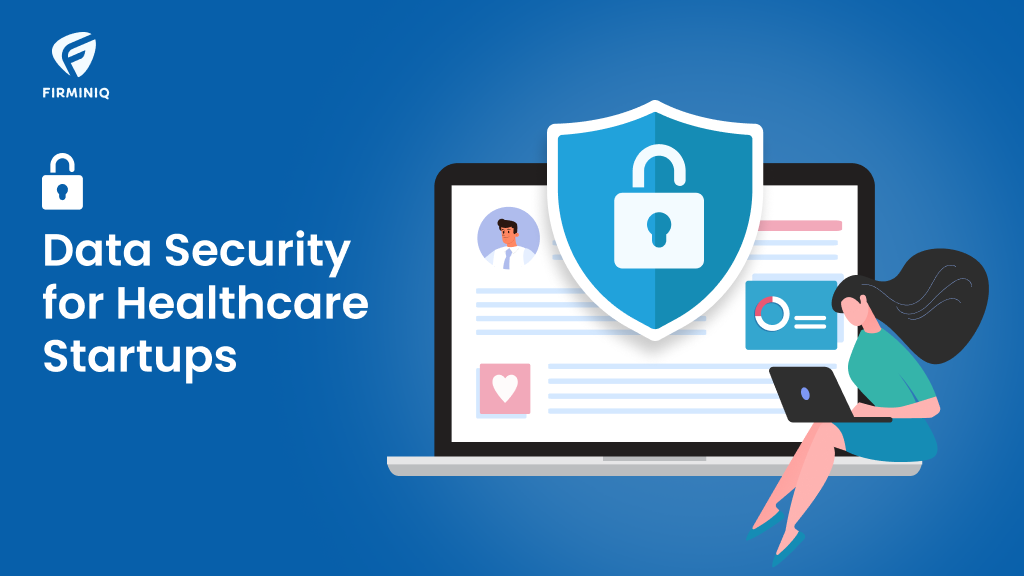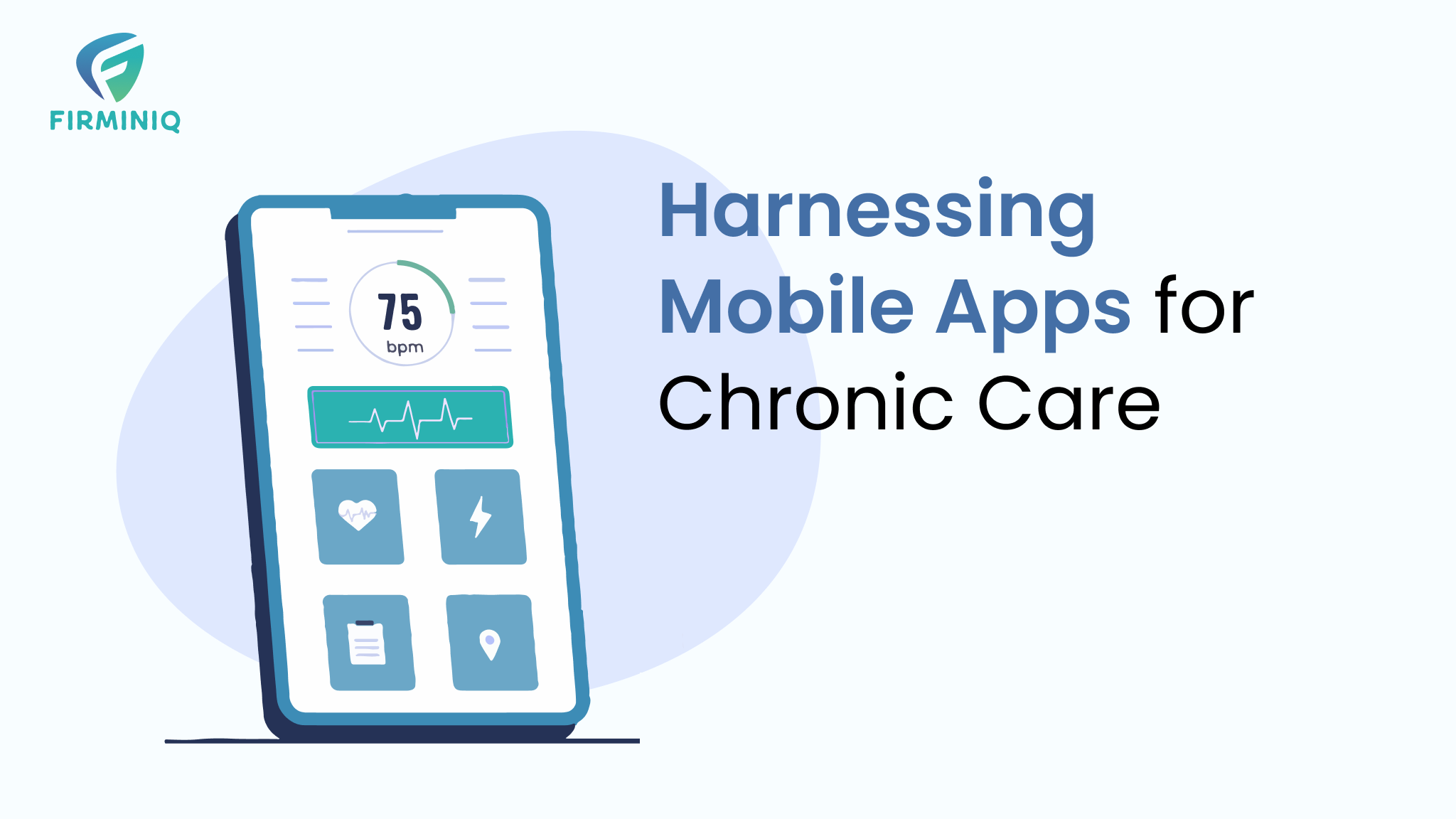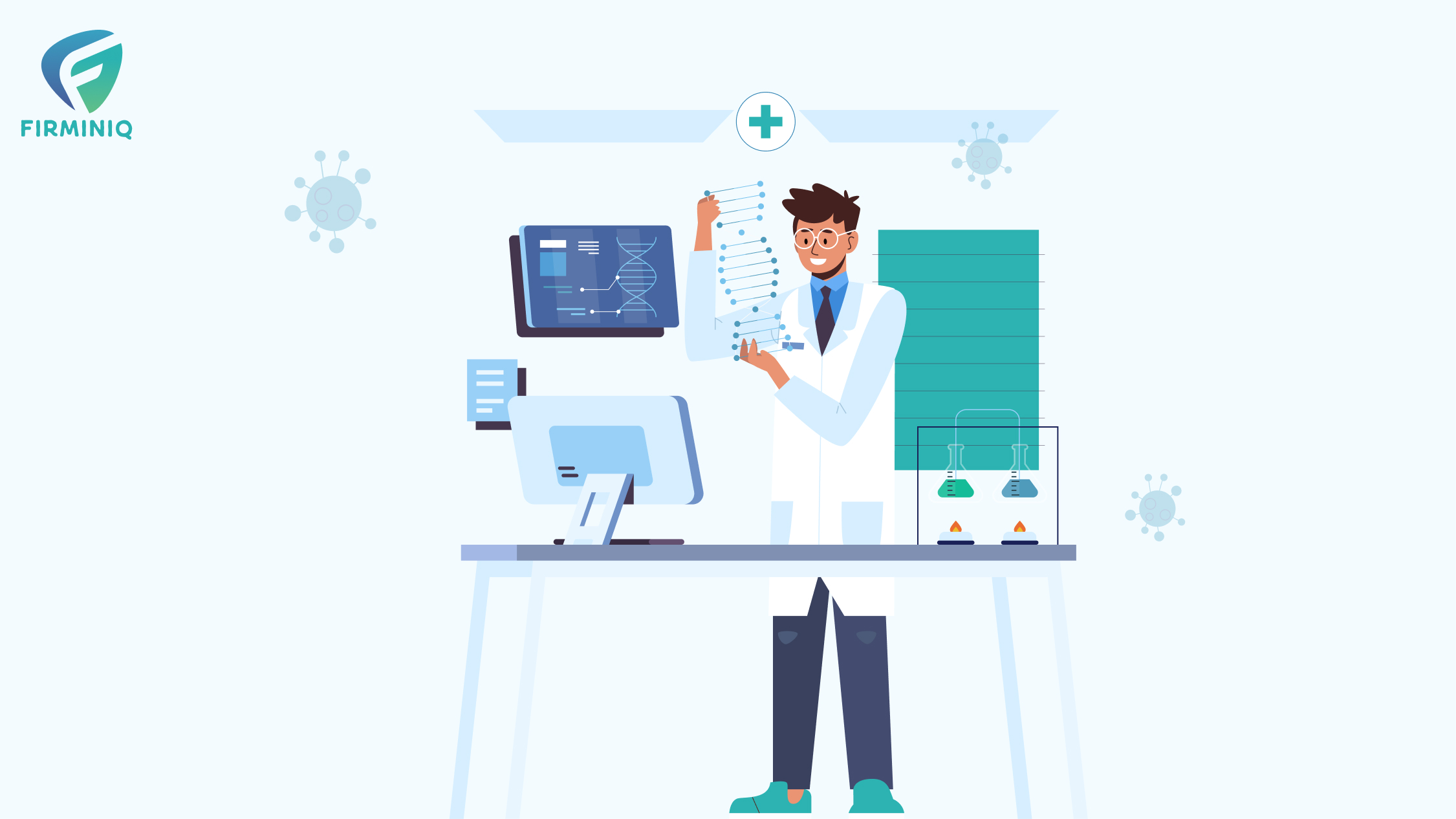Remote Patient Monitoring (RPM) interventions aim to improve the monitoring of symptoms related to chronic and other conditions and facilitate early detection of deterioration. It is increasingly becoming a favored option by healthcare systems and hospitals to manage chronic conditions while helping boost patient outcomes with a reduced cost.
As healthcare continues to shift its paradigm towards patient-centric and more personalized care, the growth of RPM looks promising with immense potential. There are continuous advancements in RPM with the integration of technologies like Artificial Intelligence, predictive analytics, interoperability, advanced sensors, and more. The integration of technologies in the RPM system allows healthcare to deliver cost-effective solutions with enhanced patient care, and the demand for RPM is anticipated to rise.
It has emerged as a valuable, and cost-saving option, and to prove here is the systematic review from the National Library of Medicine that highlights the promising role of RPM as a valuable tool for managing chronic conditions like cardiovascular disease (CVD) in the United States.
As per National Library of Medicine thirteen articles, encompassing fourteen studies, were undertaken, and reviewed between 2011 and 2022. Studies focusing on provider perspectives found higher costs but comparable effectiveness between RPM and usual care. However, analyses from payer and healthcare sector viewpoints showed RPM’s superior clinical effectiveness compared to usual care. Two studies analyzing cost-effectiveness found that RPM technology is cost-effective for managing cardiovascular disease, even when considering a conservative threshold of $50,000 per Quality-Adjusted Life-Year.
The model-based case study demonstrates the long-term cost-effectiveness of RPM. As per the study, the benefit of RPM exceeds the cost associated with its implementation and maintenance. While the upfront investment may be there, the long-term benefits in terms of improved healthcare outcomes, and reduced resource utilization justify the expenditure.
To examine the value and cost-effectiveness of RPM, let us uncover the key benefits for patients and providers, considerations healthcare organizations one must bear in mind to determine the value of RPM and its expected value.
Key Benefits of RPM for Healthcare Providers and Patients
Utilization of RPM allows healthcare organizations to leverage many benefits. Let us delve deeper into these advantages.
How can Organizations Determine the Value of RPM?
Several factors help determine the value of RPM and allow organizations to make the right decision before investing in the RPM programs. Here are the critical factors:
1. Prospects for the Returns
Identify the different revenue sources that can be generated via RPM. From reimbursement from payers to value-based care models, partnerships, and collaborations, other insurance providers can provide access to additional resources and funding opportunities while generating valuable insights that would support future revenue generation.
Also having a clear understanding of reimbursement codes is vital that can fortify the revenue from the RPM services.
2. Evaluate Financial Implications
The first step towards determining the value of RPM is evaluating the cost associated with implementing the RPM program. From the initial upfront costs like the cost of devices, setting up the equipment, and software to training the staff about the usage and ongoing maintenance, there are many factors that help analyze the cost. Scalability costs also serve as a factor as with the growth of RPM, there may be an additional cost required to scale infrastructure, resources, and more.
It is vital to examine and have a comprehensive understanding of the prior investment needed to implement the RPM program. The cost analysis formulates as a groundwork that assesses the value and return on investment of the RPM program.
3. Enhanced Resource Management
RPM offers opportunities for providers to assess patients remotely and keep track of their vitals and health status. It saves both the healthcare provider and patient time and resources that would otherwise be spent on travel, admin tasks, and more. RPM can help improve resource utilization within healthcare as it reduces in-person visits, saves physician time, and staff utilization, streamlines the workflow processes, and more.
4. Decreased Hospitalizations and Urgent Care Visits
Reduced hospital visits and hospitalizations are one of the primary benefits of RPM. To analyze RPM value, optimize historical data, and understand the prevalence and costs patients paid during emergency visits. Reviewing EHR (Electronic Health Records), and other sources can help identify patterns.
Once the number of hospitalizations is identified, estimate the cost-cutting that could be achieved with early intervention and monitoring. RPM could help reduce the frequency of hospital visits by detecting the health condition prior and offering timely intervention. Indirect costs associated with hospitalizations or emergency visits, such as lost productivity, transportation expenses, and more.
5. Patient Contentment and Retention
If the patients are happy and engaged, they are more likely to adhere to treatment plans and recommendations by the physician. RPM is one such approach that allows patients to manage their health conditions via self-monitoring. Conduct patient surveys, take feedback, and understand their perspective about the utilization of RPM.
Satisfied patients are likely to recommend such practices to other patients, which is quite beneficial and leads to revenue growth in the long term. Prioritizing patient satisfaction and delivering high-quality care through RPM programs, healthcare practices can build strong patient relationships and revenue with time.
The Expected Value Addition of RPM
With the positive impact of RPM on reduced hospitalizations, reduced healthcare disparities, optimized cost, and data-driven insights, healthcare providers are revolutionizing the way care is delivered.
As per EMARKETER, University of Pittsburgh Medical Center (UPMC) reduced hospital readmission penalties and maintained high patient satisfaction scores through RPM-enabled home health monitoring systems and other telehealth delivery methods. They were able to reduce the risk of hospital readmissions by 76% and the patient satisfaction score was enhanced to 90%.
Also, according to a 2017 report, Trinity Health’s implementation of RPM has demonstrated remarkable success in reducing hospital readmissions, improving patient compliance, and enhancing overall patient satisfaction. Leveraging RPM technology and the support of its Virtual Care Center, Trinity Health achieved 8% reductions in readmission rates within 30 days post-discharge, and later to 6%.
Furthermore, another study by the National Library of Medicine evaluated the cost-effectiveness of RPM for managing type 2 diabetes (T2D). Utilizing technological innovations, telemedicine programs can remotely monitor the lifestyles of patients diagnosed with type 2 diabetes, leading to improved glycemic control. This, in turn, can lower the occurrence of complications and decrease the costs associated with managing the condition.
All the above statistics clearly depict that RPM implementation saves costs, enhances efficiency, and ensures better resource utilization, making it a valuable tool for modern healthcare delivery.
Epilogue
As discussed above, RPM is one of the valuable tools that offers numerous benefits to healthcare providers and patients. Considering the future landscape, RPM value will continue to rise, driven by technological advancements and changing patient needs. Embracing RPM and investing in the same is a value addition for healthcare organizations that boosts operational efficiency and revolutionizes patient care.
With the rising usage of RPM among patients, healthcare providers, and other stakeholders it becomes necessary for healthcare organizations to set up a successful RPM program. At FIRMINIQ, we can help you build custom RPM solutions that align with your needs. Leverage our expertise to build a solution and stay ahead of the curve.


